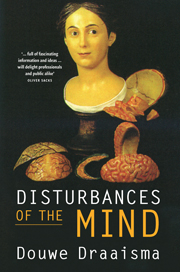Book contents
- Frontmatter
- Contents
- Introduction
- 1 Towards dusk the images appear
- 2 A tormenting round of tremors
- 3 Phineas Gage’s posthumous stroll
- 4 The Celestine prophesy
- 5 Sparks from a Leyden jar
- 6 Siberian brandy
- 7 Go to hell, idiot! Gilles de la Tourette syndrome
- 8 A labyrinth of tangles
- 9 The Mercator of neurology
- 10 The headquarters of madness
- 11 A cup of tea for the doppelgänger
- 12 Little professors
- 13 The Cardan suspension of science
- Index
- References
11 - A cup of tea for the doppelgänger
Capgras syndrome
Published online by Cambridge University Press: 05 March 2014
- Frontmatter
- Contents
- Introduction
- 1 Towards dusk the images appear
- 2 A tormenting round of tremors
- 3 Phineas Gage’s posthumous stroll
- 4 The Celestine prophesy
- 5 Sparks from a Leyden jar
- 6 Siberian brandy
- 7 Go to hell, idiot! Gilles de la Tourette syndrome
- 8 A labyrinth of tangles
- 9 The Mercator of neurology
- 10 The headquarters of madness
- 11 A cup of tea for the doppelgänger
- 12 Little professors
- 13 The Cardan suspension of science
- Index
- References
Summary
On a June day in 1918, Madame M walked into a Paris police station to report that a gang of bandits had kidnapped several children and were holding them prisoner in the cellar of her house. She could hear them whimpering and calling for their mother. And all over Paris there were people being held underground. She asked for two gendarmes to go with her to free the prisoners. But instead, Madame M was taken to the Infirmerie Spéciale, an emergency shelter for the mentally disturbed. Two days later she was admitted to the mental hospital Sainte-Anne, and in the spring of 1919 she was transferred to another large psychiatric hospital in Paris, Maison-Blanche. There she was given into the care of Joseph Capgras.
The fact that we know so much more about the case of M than about the thousands of other people with similar delusions in a large city like Paris, whether inside or outside the asylums, is due to a single bizarre detail in her account. She told Capgras that her husband and her daughter had disappeared and had been replaced by doppelgängers. M called them ‘sosies’, people who are the spitting image of someone else. This designation was recorded in the case study of M which Capgras and his assistant Reboul-Lachaux drew up in 1923: M displayed the symptoms of the ‘illusion des sosies’. This phenomenon, the delusion that individuals in your immediate surroundings (your husband or wife, parents or children) have been replaced by doppelgängers, is known today as ‘Capgras syndrome’.
- Type
- Chapter
- Information
- Disturbances of the Mind , pp. 280 - 297Publisher: Cambridge University PressPrint publication year: 2009



